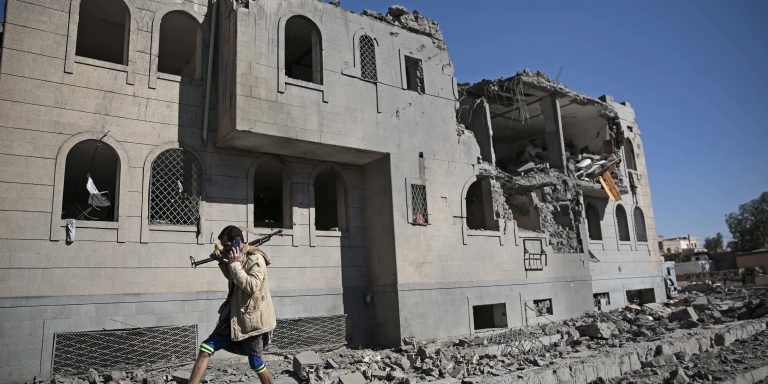INTELBRIEF
January 30, 2018
IntelBrief: Even More Chaos in Yemen

- On January 28 and 29, rival groups violently clashed in Aden, Yemen, as the Saudi-led coalition fought amongst itself.
- The UAE-supported separatists fought with Saudi-backed government forces, leaving at least 36 dead and 185 wounded, according to the International Committee of the Red Cross.
- The fractured coalition is another sign of the spiraling disaster of the Saudi-led war in Yemen, with the Yemeni people caught in the middle.
- There is no end in sight for the war, which has pushed the Houthi rebels closer to Iran than before the war began.
The quagmire in Yemen, one of the worst preventable humanitarian disasters in recent memory, declined into further chaos on January 28. For two days, forces supporting the Southern Transitional Council (STC) fought forces loyal to exiled Yemeni President Abd Rabbuh Hadi. The STC is heavily supported by the United Arab Emirates (UAE) while the Hadi forces are heavily supported by Saudi Arabia. These two countries are the leading members of the coalition that is currently bombing Yemen to drive out the Houthi rebels from power and to restore the Hadi presidency. Now, these two regional powers are supporting rival factions that are fighting each other.
The war in Yemen has become exceedingly problematic for Saudi Arabia. Led by Crown Prince Mohammed bin Salman, the campaign to restore the Hadi presidency—and in the process, reduce Iranian influence in Yemen by diminishing the Houthi rebels—began in March 2015. In the nearly three years since the air campaign began, more than 10,000 Yemeni civilians have been killed, with outside observers reporting that a great deal of the causalities were caused by inaccurate or even indiscriminate Saudi airstrikes on civilian targets.
The coalition between the UAE and Saudi Arabia had papered over the differences between, and the self-interests of, the two countries, but that is no longer the case. The precursor to the January 28 fighting began when the STC, a collection of former government ministers and the heads of five southern provinces that wish to form an independent southern Yemen, gave the Hadi government—internationally recognized as Yemen’s ruling government, even though President Hadi himself remains in Saudi Arabia—a demand to dissolve itself within seven days. On January 27, the Hadi government banned outdoor public gatherings in an attempt to prevent massive demonstrations. The ban was met with violence by STC forces, who attacked government offices in Aden. Prime Minister Ahmed bin Dagher said the STC was attempting a coup, and that the actions of the STC were ‘no different than the crimes committed by the Houthis in Sanaa.’
The developments of January 28 are particularly worrisome. The attacks in Aden were no small affair, with both sides using tanks and heavy weapons. At least 36 people were killed and approximately 185 more were wounded, according to the International Committee of the Red Cross. There is no shortage of weapons in Yemen, as both the UAE and Saudi Arabia are heavily invested in supporting the conflict.
Meanwhile, the primary goal of the war in Yemen is actually further from being achieved than when it began in March 2015. The Houthi rebels have moved closer to Iran, the humanitarian disaster continues to worsen, and now, with the coalition fighting amongst itself, even as it continues to fight the Houthis, the situation in Yemen is even more dire.
For tailored research and analysis, please contact: info@thesoufancenter.org
[video width="960" height="540" mp4="https://thesoufancenter.org/wp-content/uploads/2018/01/Final-Edit-1-120.mp4" poster="https://thesoufancenter.org/wp-content/uploads/2018/01/AP_17347388235462.jpg"][/video]